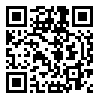Assistant Professor, Department of Computer Engineering, Bu-Ali Sina University, Hamedan, Iran
Abstract: (713 Views)
Introduction: Introduction: Healthcare systems are increasingly reliant on computing models to improve the accessibility and quality of services. While cloud computing provides scalability, its inherent limitations—such as latency and bandwidth—negatively impact critical applications. Fog computing emerges as a transformative alternative, bringing processing and storage closer to the network edge. This systematic review evaluates fog computing within the context of healthcare services, addressing service classification, architectural requirements, and deployment challenges.
Method: We identified articles between 2018 and 2022 by searching six electronic databases, using keywords related to “Fog Computing” and “Healthcare.” The inclusion criteria were full-text availability and relevance to the topic. Reviews, books, and unrelated studies were excluded. Ultimately, the included articles were analyzed to identify services, assess quality, examine architectures, and evaluate components along with their features, functional, and non-functional requirements.
Results: The search generated 3,519 studies, of which 125 studies were included. This study highlights the significance of computing models in healthcare systems based on two main factors: patient mobility and their distance from medical facilities, which necessitate mobile-remote services. These services typically involve remote patient monitoring, wherein vital signs are transmitted to healthcare centers for timely decision-making by care providers. Core functional requirements focus on data manipulation, including sharing and processing, while the main non-functional requirement is performance, with sensitivity to delay. Common architectural models include n-tier and layered structures, where each tier can be deployed independently based on specific needs. Key deployment challenges include limited resources at edge tiers and inadequate dynamic coordination among services.
Conclusion: Fog computing enhances healthcare services by reducing the limitations of cloud computing; however, challenges such as standardization and dynamic resource management persist. Future studies should focus on developing service-specific architectures, adaptive deployment strategies for mobile users, and precise event logging. This review highlights the necessity for customizable and verifiable solutions to provide real-time healthcare services, proposing context-aware architectures as a priority.
Method: We identified articles between 2018 and 2022 by searching six electronic databases, using keywords related to “Fog Computing” and “Healthcare.” The inclusion criteria were full-text availability and relevance to the topic. Reviews, books, and unrelated studies were excluded. Ultimately, the included articles were analyzed to identify services, assess quality, examine architectures, and evaluate components along with their features, functional, and non-functional requirements.
Results: The search generated 3,519 studies, of which 125 studies were included. This study highlights the significance of computing models in healthcare systems based on two main factors: patient mobility and their distance from medical facilities, which necessitate mobile-remote services. These services typically involve remote patient monitoring, wherein vital signs are transmitted to healthcare centers for timely decision-making by care providers. Core functional requirements focus on data manipulation, including sharing and processing, while the main non-functional requirement is performance, with sensitivity to delay. Common architectural models include n-tier and layered structures, where each tier can be deployed independently based on specific needs. Key deployment challenges include limited resources at edge tiers and inadequate dynamic coordination among services.
Conclusion: Fog computing enhances healthcare services by reducing the limitations of cloud computing; however, challenges such as standardization and dynamic resource management persist. Future studies should focus on developing service-specific architectures, adaptive deployment strategies for mobile users, and precise event logging. This review highlights the necessity for customizable and verifiable solutions to provide real-time healthcare services, proposing context-aware architectures as a priority.
Keywords: Fog computing, Healthcare services, Quality of services, Functional requirements, Non-functional requirements
Type of Study: Systematic Review & Meta analysis |
Subject:
Telemedicine
Received: 2025/07/5 | Accepted: 2025/09/4
Received: 2025/07/5 | Accepted: 2025/09/4
Audio File [MP3 3173 KB] (9 Download)
Send email to the article author
| Rights and permissions | |
 |
This work is licensed under a Creative Commons Attribution-NonCommercial 4.0 International License. |





